Kidney donation chain saves five lives at once
Procedure brings together 10 people to make crucial transplants possible.
As Taylor Brown sat in a hospital recliner reflecting on the major surgery she had a day earlier, the tears came right away.
Kidney disease is rampant in her husband’s family. So, the 39-year-old from Powell, Ohio, had known she might someday be called upon to donate one of her kidneys, maybe to her husband or one of their three young children.
Instead, it was her mother-in-law whose need was most dire. Joyce Brown, 62, a loving grandmother and once avid traveler, was on dialysis — an hourslong, sometimes daily process to remove toxins from the blood of people with kidney failure. Joyce had needed a new kidney soon, before she became too sick to safely have a transplant.
The conversation about what to do had been a short one.
“I said to my husband, ‘I either save it for you or I go through this process,’” she recalls. “Without hesitation, he said ‘I want this for my mom. She is the true matriarch of the family.’”
Even though Taylor wasn’t a tissue match, she was still able to donate one of her kidneys on behalf of her mother-in-law as part of a rare 10-person living kidney donation chain that took place in March at The Ohio State University Wexner Medical Center. Joyce received a healthy kidney from another donor in the chain, Nicole Raber.
“My 10-year-old daughter wants to go to Paris, and my mother-in-law has said since she was 6 that she would take her,” Taylor says. “And when she started doing dialysis, she was hooked up to a machine every night. It wasn’t going to happen anytime soon.
“So now, knowing that my mother-in-law has this opportunity to travel, which she loves to do, it just means the world to me. And it means the world that my kids will get to experience that with her and that my husband gets to have his mom around.”
A complex kidney transplant procedure
Living kidney donor chains often arise out of situations like the Browns’ — where a friend or family member wants to donate a kidney, but blood or tissue types don’t match. All but two patients of this chain were in this same situation. In these instances, the transplant team at the Ohio State Wexner Medical Center helps to link incompatible donor/recipient pairs with other mismatched donor/recipient pairs.
It’s a complicated process, of course, and one that doesn’t happen often — this five-way donation is the largest of its kind at the Ohio State Wexner Medical Center since 2020, when surgeons performed an eight-way living kidney donor chain. Ohio State’s Comprehensive Transplant Center is one of the busiest kidney transplant centers in the United States, having performed more than 8,000 kidney transplants since 1967.
Four of the five donors in this operation were giving on behalf of a friend or loved one who was experiencing kidney failure.
Which brings us to Kim Hollingshead.
‘Real generosity’ starts kidney donation chain
About five years ago, Kim was listening to a podcast about people who donate kidneys without any recipient in mind — folks known as altruistic or “non-directed” donors.
Nobody close to her has suffered from kidney disease. Still, she was intrigued.
“I thought to myself, ‘I think I could do that.’ I knew it wouldn’t be right then, but it always stuck in the back of my mind as something that I wanted to do at some point,” she says.
Anatomy of a kidney donation chain

Kim started the chain with no connection to anyone else in it, also called a “non-directed” donation.
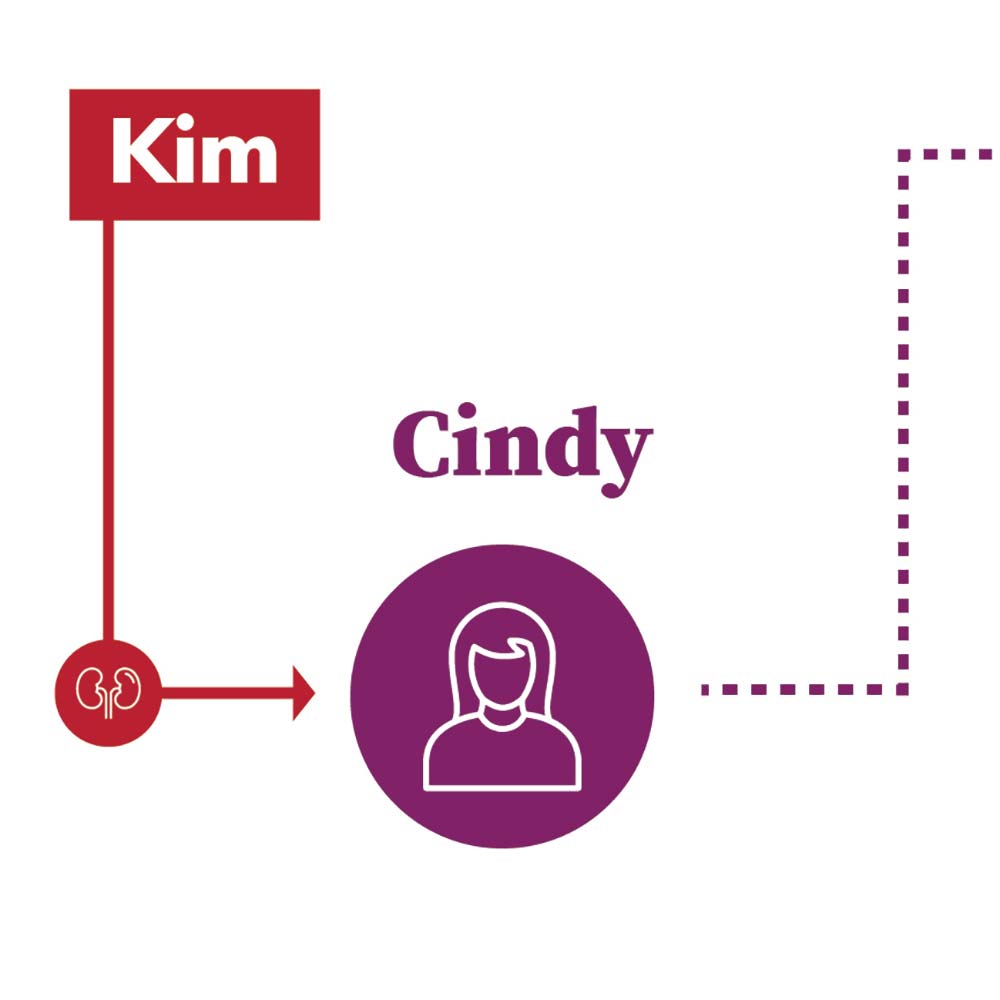
Kim donated to Cindy.
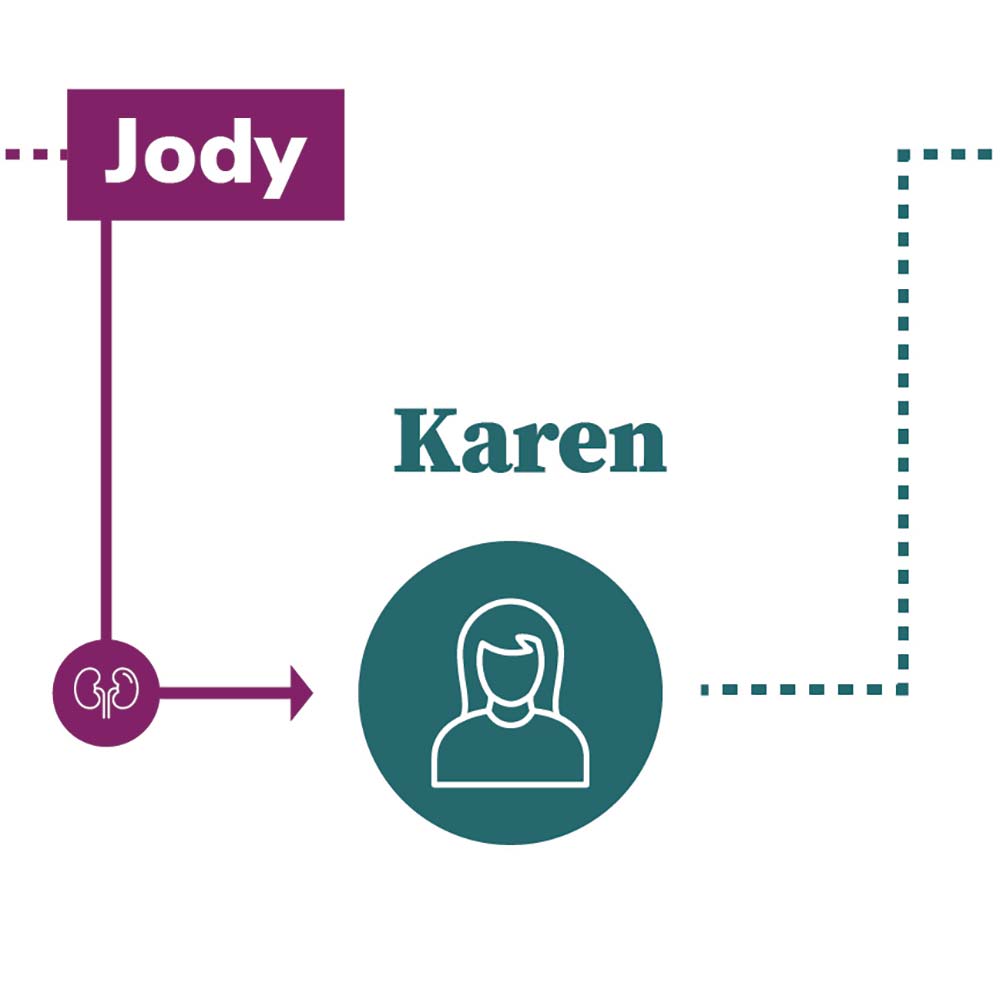
Jody donated on Cindy's behalf to Karen.

Karen's friend Nicole donated on Karen's behalf to Joyce.
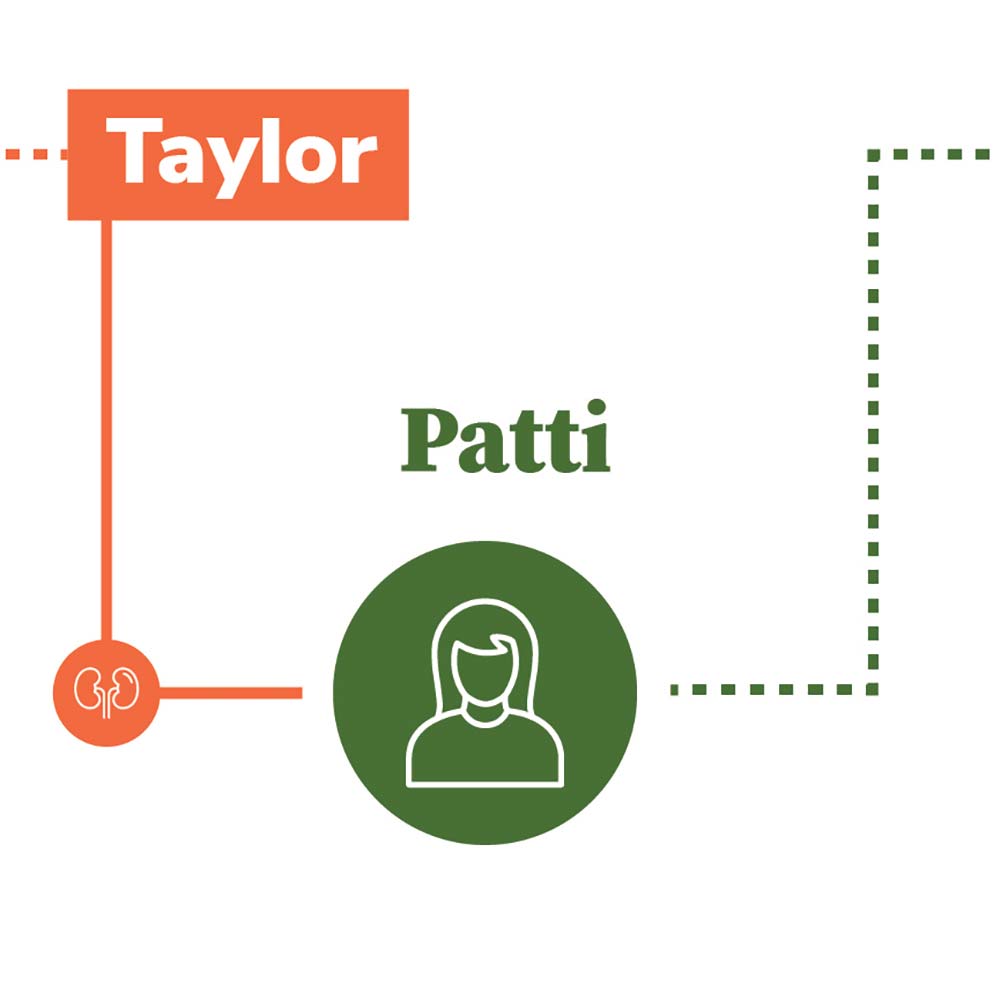
Joyce's daughter-in-law Taylor donated on Joyce's behalf to Patti.
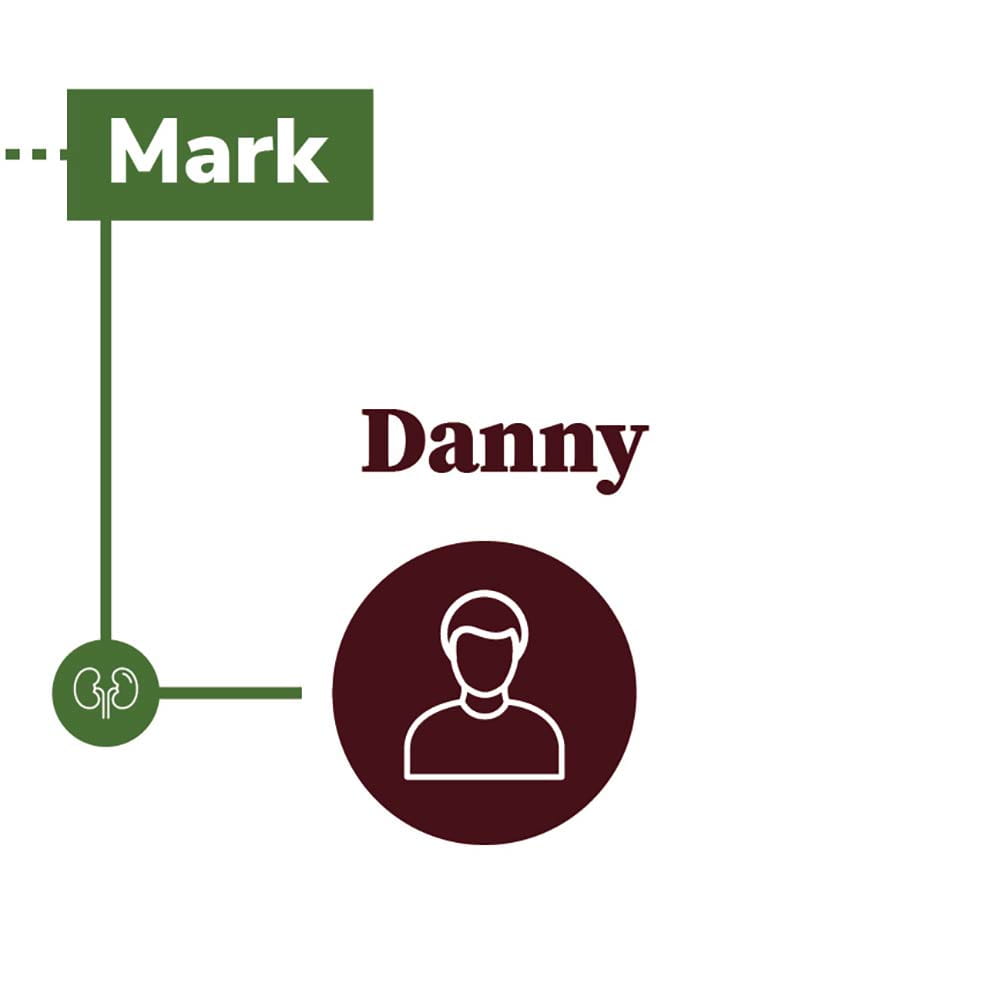
Patti's cousin Mark donated on Patti's behalf to Danny.
Now 36, the Columbus resident decided that she was at the right stage of life to donate. Her husband and parents were available to help with her recovery, her employer offered her the flexibility to take time off, and she even made sure to connect with friends who could give her a call if she got bored while she was getting her strength back.
Her willingness to donate was what set the entire chain in motion.
“This is what they teach us about real generosity, to donate without knowing whom you donate to,” says Amer Rajab, MD, PhD, Ohio State’s surgical director of kidney and pancreas transplantation. “I tell you, if you talk to me, I will cry with you because it’s unbelievable to see that.”
A better way to operate
Dr. Rajab brought laparoscopic living kidney donor surgery to Ohio State in 1999 — a process that uses smaller incisions, instead of an open surgery, making it safer with lower infection rates and a shorter recovery time. Most donors go home the day after surgery.
His team at Ohio State has performed 2,500 laparoscopic living kidney donor surgeries, with the kidneys immediately transplanted into waiting recipients.
Dr. Rajab recovered all five of the kidneys involved in the March chain.
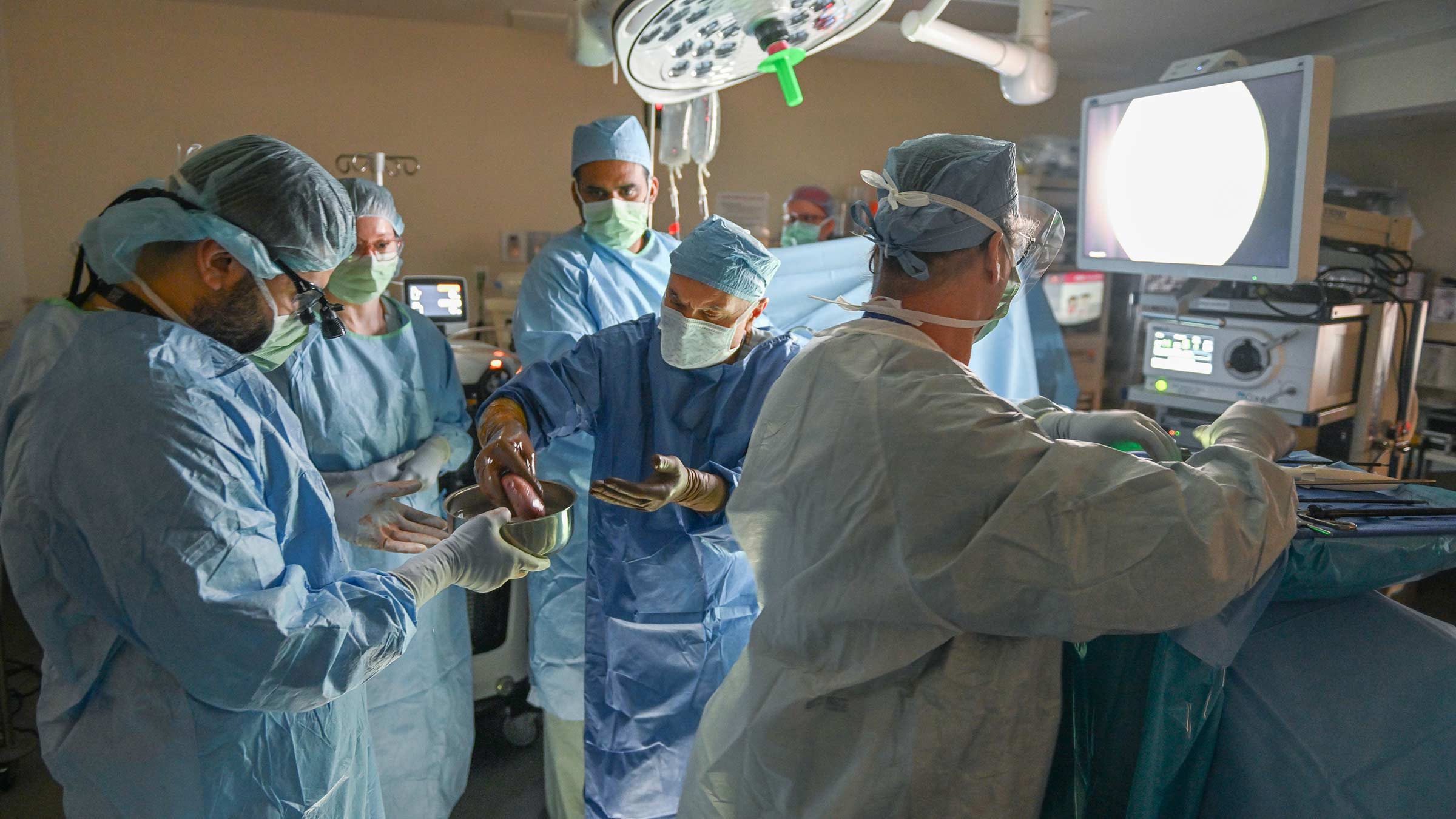
Receiving a kidney from a living donor has numerous advantages for patients:
- Organs from living donors are of the highest quality because the health history of the donor is known and verified.
- Because the donor’s health history is known, recipient outcomes after transplant are better, with the kidney lasting nearly twice as long as a kidney from a deceased donor.
- The surgeries can be scheduled, which is not the case when donors are deceased.
- Wait times with a living donor are often reduced from years to months, potentially avoiding the need or length of time on dialysis.
After receiving a new kidney, the change in the recipient is noticeable immediately.
“Seeing my mother-in-law walk in, she just literally looked a different color, just looked more alive,” Taylor Brown says of the first time she saw Joyce after the surgery. “It took my breath away.”
A life-saving act of generosity
Approximately 90,000 people in the United States are awaiting a kidney transplant, and most of them won’t get one. About 27,000 people get a kidney transplant each year, and an average of 12 people on the waitlist die each day, according to the National Kidney Foundation. In 2023, 6,290 kidney transplants, about 23%, were from living donors.
“We all do our best from day to day to help others,” Kim says. “This is a big ask, but if you're considering donating an organ, this is one of the biggest ways you can impact someone’s life.”
For the 10 people involved in this donor chain, all of whom got to meet each other before they left the hospital, the payoff of such a choice was life-affirming.
“I’m excited to live again,” says Patti Mally, who received the kidney that Taylor Brown donated on her mother-in-law’s behalf. “And I could not have done that without the kidney transplant. I just feel lucky and fortunate and appreciative.
“It is beyond words how grateful I am.”






